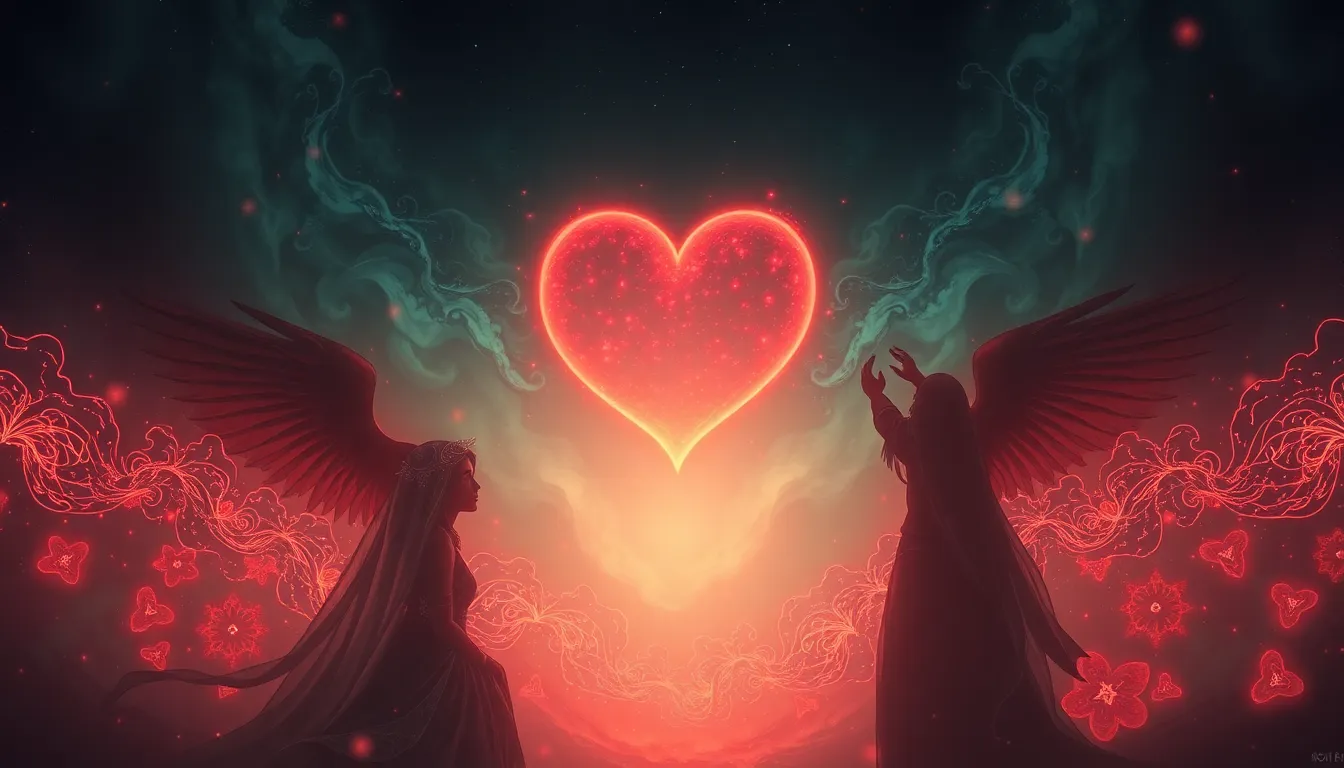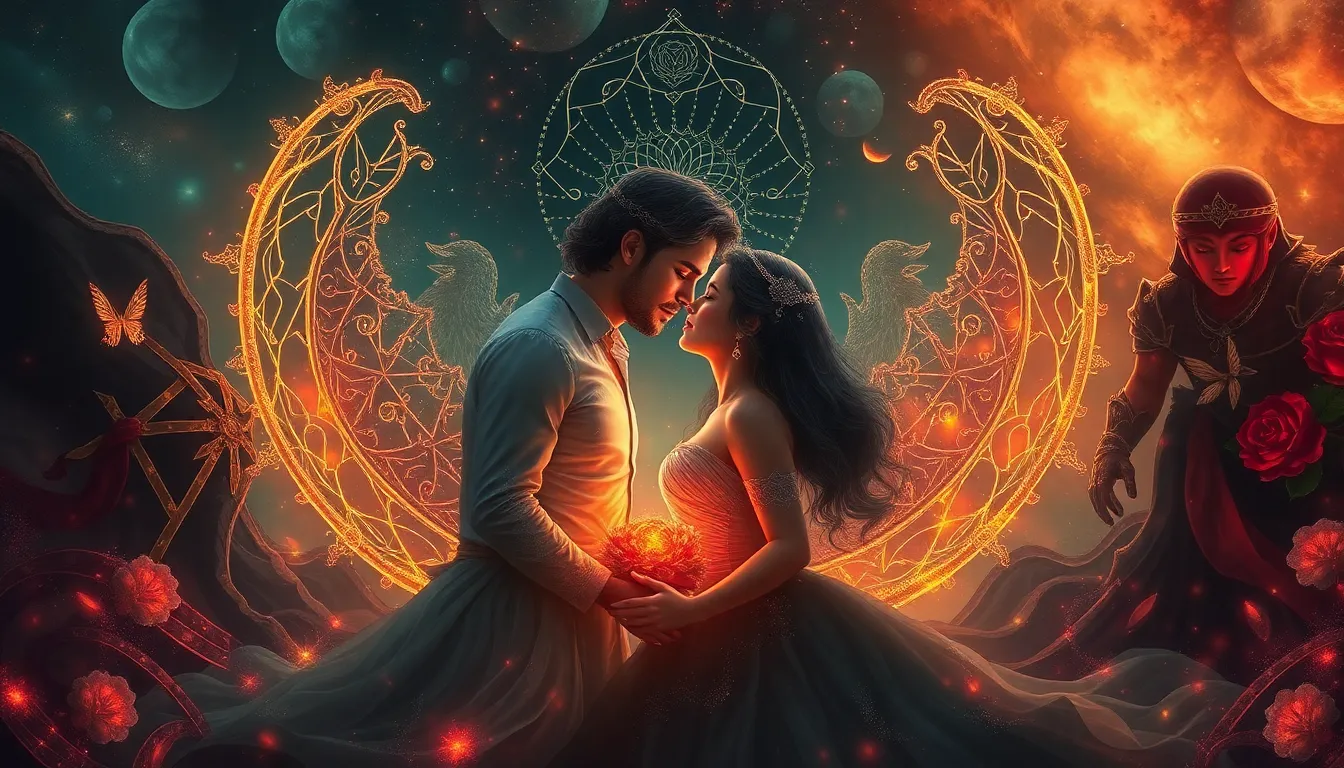Mythical Love Across Cultures: A Global Perspective on Romance
I. Introduction to Mythical Love
Mythical love, a concept that transcends borders and cultures, embodies the ideals and narratives that societies have created around the notion of romance. From ancient tales to modern interpretations, mythical love serves as a reflection of cultural values, beliefs, and aspirations.
The significance of love myths lies in their ability to shape our understanding of relationships, emotions, and human connections. These stories often reveal what cultures value in love—sacrifice, passion, loyalty, and sometimes even tragedy.
This article will explore the diverse manifestations of mythical love across various cultures, examining their origins, significance, and contemporary relevance. We will delve into myths from Greek and Roman traditions, Eastern perspectives, African folklore, Indigenous narratives, European tales, and how these influence modern romance.
II. The Origins of Love Myths
The origins of love myths can be traced back to ancient civilizations, where storytelling played a crucial role in conveying moral lessons and cultural norms. These myths often encapsulated the ideals of love, illustrating how relationships could transcend the ordinary.
Mythology has historically been intertwined with the human experience, providing a framework through which societies understood romantic ideals. For instance, love was often portrayed as a divine force, sometimes capricious, that could inspire both ecstasy and despair.
In a comparative analysis, we find that while the specifics of love myths vary, many cultures share common themes, including:
- The triumph of love over adversity
- The connection between love and fate
- The intersection of love and spirituality
III. Greek and Roman Mythology: Love and Desire
Greek and Roman mythology provides some of the most enduring tales of love and desire. One of the most famous stories is that of Eros and Psyche, which encapsulates the trials and tribulations of love. Their tale speaks to the journey of love, emphasizing the importance of trust and resilience.
Another significant pair, Venus and Mars, represents the duality of love and war. Their relationship illustrates how love can be intertwined with conflict, reflecting the complexities of human emotions.
The impact of these myths on Western romantic traditions is profound, influencing literature, art, and modern conceptions of love. They established archetypes that continue to resonate in contemporary narratives.
IV. Eastern Perspectives on Love: Stories from Asia
In Eastern cultures, love myths often blend romance with spiritual and moral lessons. The legend of Orpheus and Eurydice, while rooted in Greek mythology, finds parallels in Hindu mythology, where love is often depicted as a journey of the soul.
In China, the tale of the Cowherd and the Weaver Girl is celebrated during the Qixi Festival, symbolizing the enduring nature of love despite separation. This story emphasizes themes of longing and reunion, resonating with many lovers across generations.
Japanese folklore offers the tale of Tamamo-no-Mae, a story that intertwines love with themes of deception and transformation, highlighting the complexities of human relationships.
V. African Love Myths: Connection to Nature and Ancestry
African love myths often reflect a deep connection to nature and ancestry. The story of Nyame, the sky god, speaks to the creation of love and the importance of familial bonds. These narratives often emphasize community and the role of love in nurturing social cohesion.
In African folklore, love is celebrated in oral traditions, where stories are passed down through generations. These tales often include cultural rituals surrounding love and marriage, reinforcing the communal aspect of romantic relationships.
VI. Indigenous Love Myths: Spiritual Connections
Indigenous love myths often emphasize spiritual connections and the natural world. In many Native American cultures, love stories are intertwined with creation myths, illustrating how romantic relationships can reflect the larger cosmic order.
Spiritual beliefs play a vital role in shaping romantic relationships in Indigenous cultures. Love stories serve not only as entertainment but also as a means of preserving culture and identity, ensuring that values and traditions are passed on.
VII. European Folklore: Tales of True Love
European folklore is rich with tales of true love, particularly during the medieval period when chivalric love became a celebrated ideal. Stories of knights and their beloveds often involved quests, trials, and a deep sense of honor.
The tale of Romeo and Juliet epitomizes the concept of star-crossed lovers, showcasing the tragic dimensions of love that transcends familial conflict. Such stories have evolved over time, influencing the portrayal of love in European literature, where themes of passion and sacrifice remain prevalent.
VIII. The Influence of Mythical Love on Contemporary Romance
Mythical love continues to shape modern relationship dynamics. Ancient myths inform contemporary narratives, often highlighting the importance of emotional resilience and connection. In popular culture, love is portrayed through various media, from novels to films, that often draw on these timeless themes.
Social media has also played a critical role in redefining mythical love narratives. Platforms like Instagram and TikTok allow users to share their interpretations of love, blending traditional myths with modern realities.
IX. Cross-Cultural Comparisons: Common Themes and Variations
Despite the vast diversity in love myths across cultures, common themes emerge. Universal symbols of love—such as the heart, roses, and doves—can be found in various cultural narratives, illustrating the shared human experience.
However, differences in the portrayal of love and its challenges reflect cultural values and societal norms. For instance, some cultures emphasize arranged marriages, while others celebrate love marriages as a personal choice.
Globalization has significantly impacted cultural expressions of love, allowing for a blending of narratives and shared experiences. As cultures interact, the stories of mythical love evolve, enriching the tapestry of human romance.



